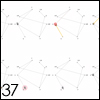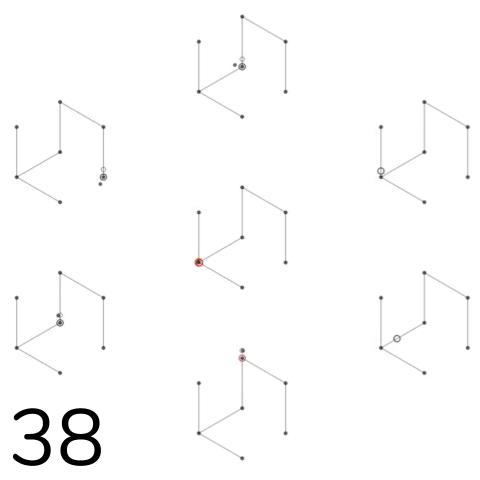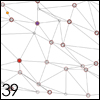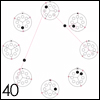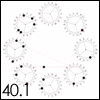Study no. 36
Performance Instructions
For 7.
Each player will receive a copy of the score as a fixed video, and should have access to equipment/software capable of video import and audio synchronization. (ProTools, Logic, etc.)
Each player is assigned one of the 7 node grids. Only one player should be assigned to each node grid.
Each player develops a set of 25 distinct sonic events. All events should have percussive attacks, and the majority of these should be 2 seconds or less in duration. A handfull may be longer, although no events should exceed 5 seconds. No words should be used, and all sonic events should be the property of the player, i.e. no sampling.
Each sonic event corresponds to one of the 25 event nodes within the node grid. A sonic event is triggered in one of two ways:
1: The moment the attack cursor arrives at an event node.
2: The moment the repeat spinner (small rotating circle) returns to 12 o'clock. This retriggers the same event node.
Score realization:
Import the score video into your DAW.
Synchronize your sonic events with their corresponding event nodes at their respective moments of attack. In other words, each time the top event node is triggered, for example, line up the beginning of the corresponding sonic event with that moment in the video.
Once all sounds are correctly placed, export a 2-channel mix as .wav or .aiff, bouncing from ZERO, and send it to me. When mixing, sounds may be altered to some degree (FX, spatialization, dynamics, etc.) so long as the fundamental sonic characteristics of each sound is largely preserved.
Do not normalize/master your mix.
Once I have received the seven 2-channel mixes, I will combine them into a master mix, synchronized to the fixed video score.
Ryan Ross Smith, June 2014.
If you would like a copy of this animated score for performance, or have any questions about the animated notation used in this piece, feel free to get in touch! My contact information can be found here.
